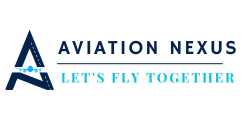The Airbus A330 is one of the most successful widebody aircraft of the modern jet age, boasting over 1,500 deliveries globally and serving as a long-haul workhorse for carriers across Europe, Asia, and the Middle East.
But in the United States—home to three major legacy airlines and one of the world’s most mature aviation markets—only two passenger airlines operate the A330: Delta Air Lines and Hawaiian Airlines.
Why is this efficient, versatile twinjet largely overlooked by other U.S. carriers? The answer lies in a mix of fleet history, manufacturer loyalty, strategic focus, and the timing of aircraft availability.
1. Delta Inherited—and Expanded—the A330 Fleet
Delta Air Lines is the largest A330 operator in the U.S. and one of the largest in the world. It operates several A330 variants:
- A330-200 for mid-range international and transcontinental routes
- A330-300 for high-capacity transatlantic flights
- A330-900neo, the next-gen variant with new engines and better fuel efficiency
Delta’s involvement with the A330 began through its 2008 merger with Northwest Airlines, which was the first U.S. carrier to order the A330. Since then, Delta has leaned into Airbus’ widebody offerings, ordering more A330neos and A350s as part of its long-term fleet modernization.
By contrast, American and United had different paths.
2. Hawaiian Airlines Chose the A330 for Pacific Needs
Hawaiian Airlines operates a fleet of A330-200s, selected specifically to support its long-haul network from Honolulu to the U.S. mainland, Asia, and Australia.
The A330-200’s range (up to ~8,000 nautical miles) and fuel economy made it ideal for Hawaiian’s “long-thin” routes. It also gave the airline a step up from the Boeing 767-300s it retired in the 2010s.
Hawaiian is also set to become the U.S. launch customer for the Boeing 787-9—a reflection of evolving preferences and manufacturer diversification.
3. American and United Stuck With Boeing Widebodies
Both American Airlines and United Airlines have historically aligned with Boeing for long-haul aircraft:
- American’s long-haul fleet centers on the Boeing 777 and 787 Dreamliner.
- United is the world’s largest 787 operator, with over 100 in its fleet and more on order.
Neither airline inherited A330s through mergers (unlike Delta), and both doubled down on the Dreamliner during the 2010s when widebody replacements were being decided. Their close ties to Boeing—and logistical efficiency of fleet commonality—gave little incentive to introduce a new aircraft type from Airbus.
American briefly operated some A330s inherited from US Airways, but retired them by 2020 as part of a COVID-era fleet simplification effort.
4. Fleet Commonality Is a Strategic Priority
Widebodies are expensive and complex to maintain. Airlines prefer to limit aircraft types to:
- Reduce maintenance and spare parts costs
- Streamline pilot training and certifications
- Improve operational flexibility (e.g., aircraft swaps)
Since American and United already had large 777 and 787 fleets, adding or retaining a small number of A330s would create operational inefficiencies. Retiring or bypassing the A330 in favor of Boeing widebodies made better business sense—even if the A330 is a capable aircraft.
5. Timing and Market Trends Didn’t Favor the A330neo
The newer A330neo—a re-engined version offering lower fuel burn and greater range—came to market later than the Boeing 787. While the 787 was plagued with early delays, it still had a head start in U.S. airline fleets by the mid-2010s.
By the time the A330neo was available for delivery in volume, most major U.S. carriers had already committed to the 787 or A350.
Only Delta, which was already flying older A330s and had a favorable relationship with Airbus, placed a significant A330neo order. Hawaiian Airlines briefly ordered the A330-800neo but switched to the 787-9 before taking delivery.
Bottom Line
Despite its global popularity, the Airbus A330 never became a U.S. industry standard. Strategic timing, manufacturer loyalty, and inherited fleet decisions limited its adoption to just Delta and Hawaiian Airlines.
- Delta continues to invest in the A330neo for its global network.
- Hawaiian uses the A330-200 to connect the islands with major international markets.
- American and United have doubled down on Boeing’s 787 Dreamliner and 777 families.
Unless major fleet strategies shift, the A330 will remain a niche—but important—presence in the U.S. airline landscape.

